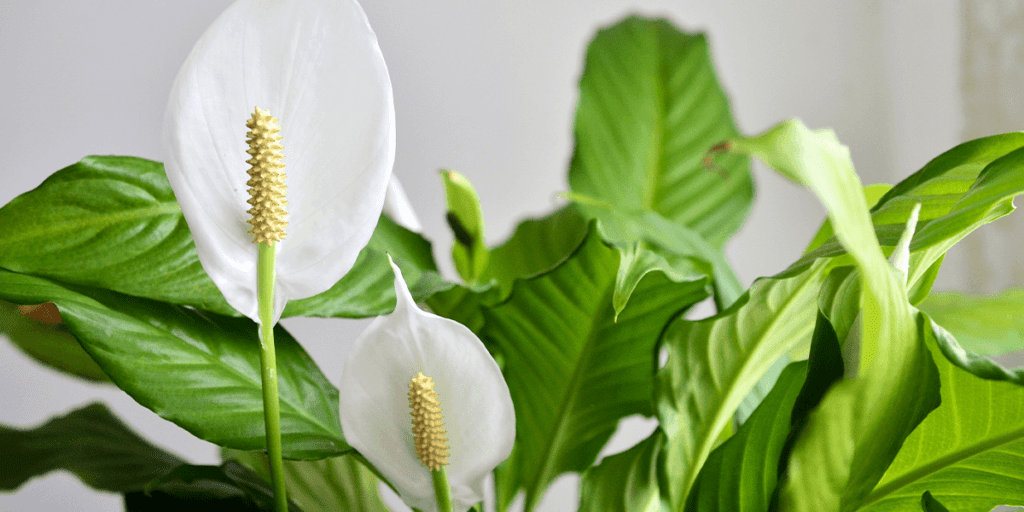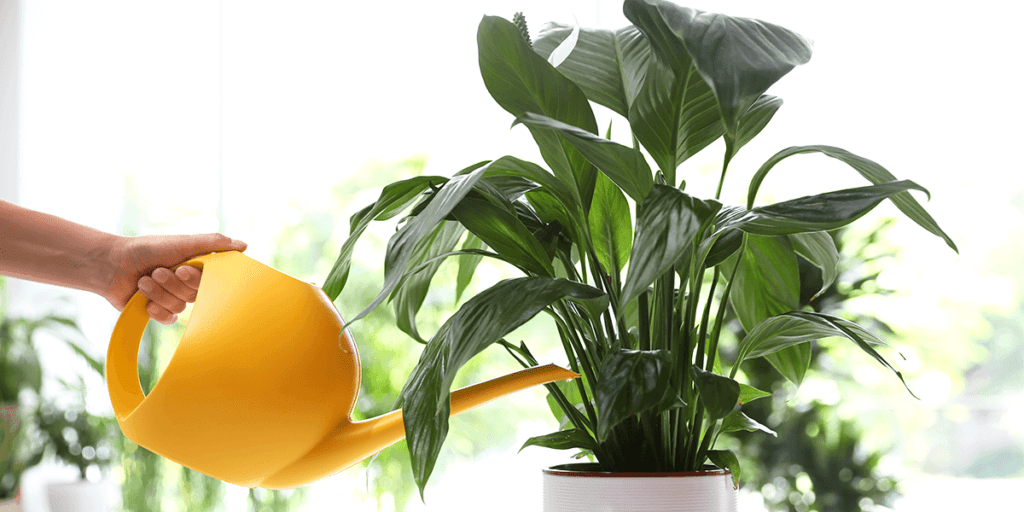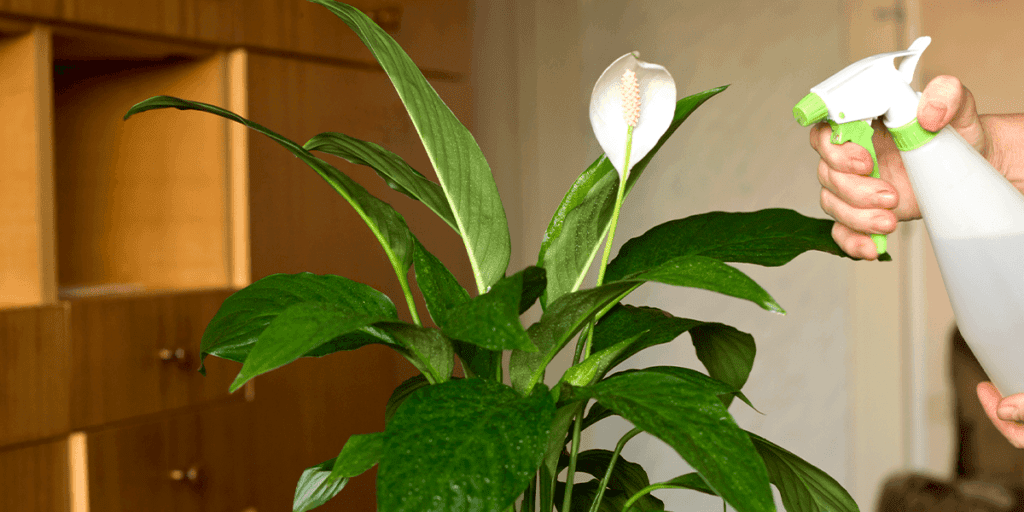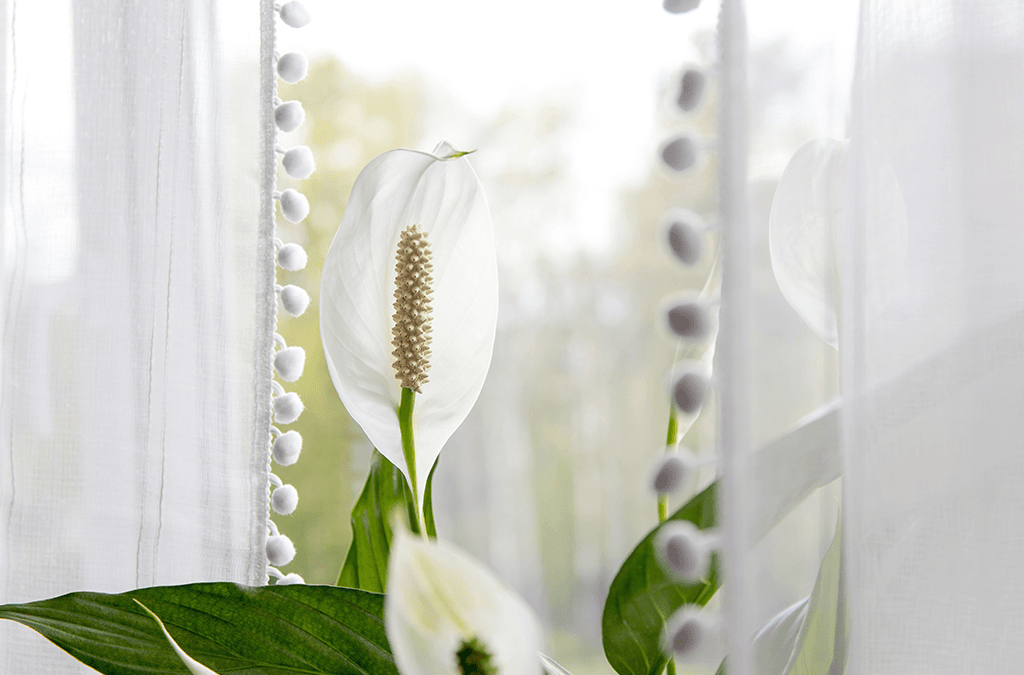Peace lilies are popular houseplants with white flowers that exude an air of peace and tranquility. They’re touted as easy-to-grow, and in fact they are, making them the perfect Christmas gift for new plant parents. But like all houseplants, and all of us humans, they have a few care preferences that need to be met if they’re going to thrive, and ultimately, bloom!
Where Do Peace Lilies Come From?
These plants come from the floors in tropical forests, receiving filtered light, consistent moisture, and humidity. The key word here is consistent. You can mimic these conditions in your home, but we need more specifics to know how to recreate that environment in a house in Northern Illinois. So let’s get to the basics of peace lily care!

Where is the Best Place to Put a Peace Lily?
Peace lilies are often described as low-light tolerant. Yes, they may tolerate and survive in low light, but surviving is different than thriving. And low light is not no light. If we want them to bloom, we need to give them ideal light. So what is that?
Bright, indirect light is what a peace lily plant prefers. Five to six feet from a sunny window with a sheer curtain is ideal—or in other words, enough distance so their leaves aren’t scorched by direct sun, but enough to receive the rays that indirectly light a room. A dark corridor or windowless room won’t have enough sun for this plant to produce its showy flowers.
Here are the main signs that your peace lily needs a change of location:
- Pale and curled leaves means it is not getting enough light.
- Scorched leaves means the light is too bright.
- Often, if the plant is not blooming, it’s a sign of too little light.

How Much Water Do Peace Lilies Need?
Peace lilies want moist, but never wet soil. Basically, aim to water them once the top inch or two of soil is dry. Stick your finger into the soil to find out. No moisture? Give them a good drink. Still moist? Wait another day or two. Here are more care tips to keep in mind:
- Brown leaf tips may be a sign of underwatering or lack of humidity.
- Yellow leaves indicate either underwatering or overwatering. Return to the one to two inch rule described above if you’re unsure which way you’ve strayed.
- Peace lilies prefer to be underwatered rather than overwatered. So take care not to rush ahead with watering when they don’t need it.
- They’re sensitive to chemicals in tap water, such as fluorine and chlorine. Use filtered water if possible, or let the water sit in the watering can for 24 hours to allow the chlorine to evaporate.
The Ideal Pot and Soil for Peace Lilies
Peace lilies thrive with soil rich in organic matter, such as high-quality potting soil. They also like to be a bit rootbound in their pot. There’s no need to upsize their pot until they show excessive signs of being rootbound. Those signs include wilty or droopy leaves 2-3 days after watering, or a constant need for water every few days. Take them up to the next biggest pot size, about one to two inches larger in diameter, and always with adequate drainage holes.

Peaceful Temperatures and Humidity
The tropical forests where peace lilies grow wild have consistent warmth and good humidity. Care for them in your home in temperatures of 65-80 degrees, if possible, and away from cold drafts during the winter. If you notice brown leaf tips, set out a tray of water with pebbles underneath your plant for more humidity.
Fertilizing Your Peace Lily
Peace lilies are not heavy feeders. They enjoy fertilizer about every six weeks during the spring and summer months, but don’t need any fertilizing during the winter. Green flowers are a sign of too much fertilizing. Weak-looking flowers are a sign to boost your fertilizing or switch to a fertilizer made for flowering plants with a higher amount of phosphorus.
When giving the gift of a houseplant at Christmas, it’s always helpful to include a brief summary of plant care. As we mentioned, peace lilies need consistent care. Even during the hectic times of Christmas, they still need steady watering, temperatures, and sunlight. If your gift recipient sets them up with a good care routine right away, they’ll enjoy the peaceful white flowers and beautiful green leaves throughout the holidays and into the New Year!
Platt Hill Nursery is Chicago’s premier garden center and nursery in the Chicago area.


